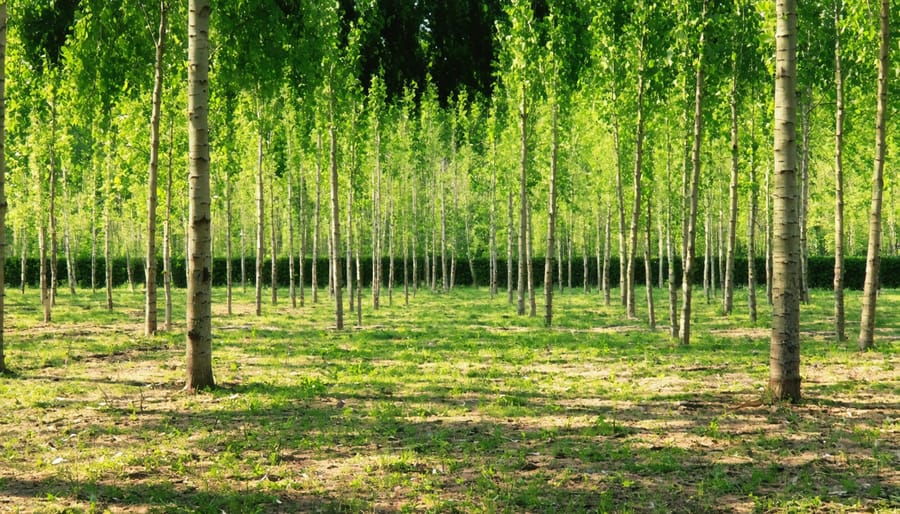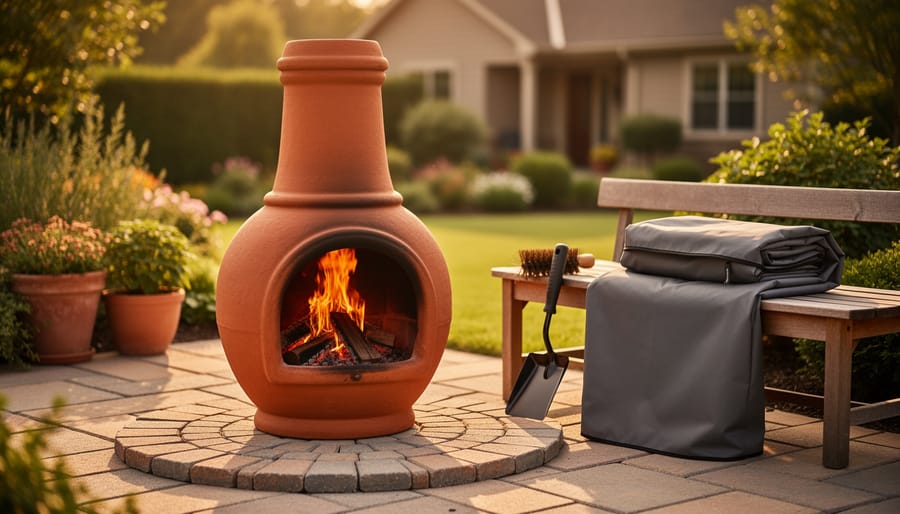Transform your backyard into a sustainable fuel source by cultivating fast-growing trees like hybrid poplar and willow, which can produce harvestable firewood within 5-7 years. Moving beyond traditional fireplace fuels, organic alternatives offer both environmental benefits and long-term cost savings. Dried corn cobs, compressed biomass pellets, and sustainably harvested bamboo provide efficient, clean-burning options that generate consistent heat while reducing your carbon footprint.
Creating your own organic fuel ecosystem isn’t just about growing trees—it’s about establishing a renewable cycle that ensures warmth for generations. By incorporating permaculture principles and dedicated growing zones, even a modest quarter-acre plot can yield enough sustainable fuel to supplement your winter heating needs. This approach combines modern efficiency with time-tested methods, offering homeowners a practical path to energy independence while preserving our natural resources.
Today’s organic fuel solutions represent a perfect blend of innovation and environmental stewardship, providing reliable heat without compromising our planet’s future. Whether you’re looking to reduce heating costs or minimize your environmental impact, growing your own fuel sources offers a rewarding way to achieve both goals.
Fast-Growing Trees for Sustainable Firewood
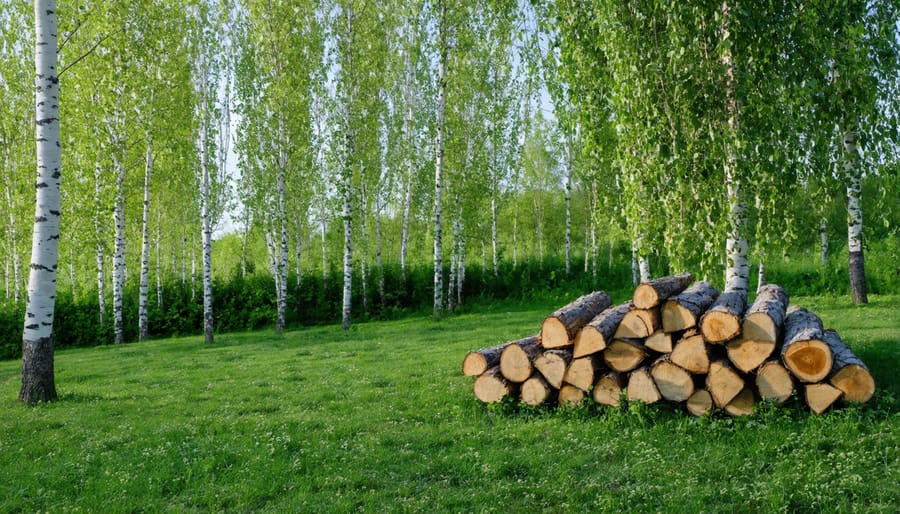
Best Trees for Quick Harvest
When planning your sustainable firewood source, several tree species offer impressively quick growth rates and excellent burning qualities. Hybrid Poplar leads the pack, reaching harvest size in just 5-7 years and providing good-quality firewood when properly seasoned. These adaptable trees can grow up to 8 feet annually in optimal conditions.
Silver Maple presents another excellent option, growing rapidly while producing dense wood that burns hot and long. Though not as quick as Hybrid Poplar, Silver Maple reaches harvestable size in 8-10 years and adapts well to various soil conditions.
Australian Eucalyptus varieties, particularly the Eucalyptus grandis, deserve special mention for their remarkable growth rate and superior burning qualities. In warm climates, these trees can be ready for harvest in as little as 4-6 years, offering exceptional heat output and pleasant aromatic properties.
Black Locust combines rapid growth with exceptional burning qualities, reaching maturity in 10-12 years. This species produces some of the hottest-burning firewood available, making it highly efficient for heating purposes. As a bonus, Black Locust naturally resists rot and requires minimal maintenance.
For smaller properties, River Birch offers a practical solution, growing quickly while maintaining a manageable size. Ready for first harvest in 8-10 years, River Birch provides good-quality firewood that’s easy to split and produces consistent heat.
Remember to plant these trees in well-draining soil and provide adequate spacing for optimal growth rates.
Planting and Maintenance Tips
Growing your own firewood trees is a rewarding long-term investment in sustainable heating. Start by selecting fast-growing hardwood species like oak, maple, or black locust that thrive in your climate zone. Choose a sunny location with well-draining soil, allowing adequate spacing between saplings – typically 12-15 feet apart for optimal growth.
Before planting, prepare the soil by removing weeds and incorporating organic matter. Young trees need regular watering during their first two growing seasons, especially during dry spells. Apply a layer of mulch around each tree, keeping it away from the trunk to prevent rot and pest problems.
Protect your saplings from deer and other wildlife with tree guards or fencing until they’re established. Prune dead or crossing branches annually to promote healthy growth and proper form. Consider implementing a rotating planting schedule, adding new trees every few years to ensure a continuous supply of firewood.
Monitor your trees for signs of disease or pest infestation, addressing any issues promptly to maintain tree health. Most firewood species take 5-10 years before they’re ready for harvesting, so patience is key. When harvesting, cut trees during the dormant season (late fall to early spring) for optimal wood quality and easier splitting.
Remember to practice sustainable forestry by replanting after harvesting and maintaining soil health through proper management techniques.
Biomass Alternatives from Your Garden
Corn and Other Energy Crops
Growing your own fuel crops can be a rewarding way to ensure a sustainable supply of organic heating material. While many homeowners are familiar with traditional alternative heating options, corn and other energy crops offer an innovative approach to fireplace fuel production. Corn, in particular, has gained popularity due to its high energy content and relatively easy cultivation process.
To grow corn for fuel, you’ll need a dedicated garden space with well-draining soil and full sun exposure. The key is selecting varieties specifically bred for their energy content rather than eating qualities. These specialized corn types typically have higher BTU outputs when burned. Once harvested and properly dried, corn kernels can be used in specially designed corn stoves or mixed with other biomass materials for traditional fireplaces.
Beyond corn, other viable energy crops include switchgrass, miscanthus, and fast-growing bamboo varieties. These plants offer excellent yields and can be harvested annually or semi-annually, depending on the species. Switchgrass is particularly appealing for home growers as it requires minimal maintenance and can thrive in various soil conditions.
When planning your energy crop garden, consider rotating different crops to maintain soil health and maximize yield. A 1,000-square-foot plot can typically produce enough fuel to supplement your winter heating needs significantly. Remember to allow adequate drying time after harvest – moisture content should be below 15% for optimal burning efficiency.
For those with limited space, container growing methods can still yield useful amounts of biomass fuel, though on a smaller scale. The key is proper planning and sustainable cultivation practices to ensure a continuous supply of clean-burning organic fuel.
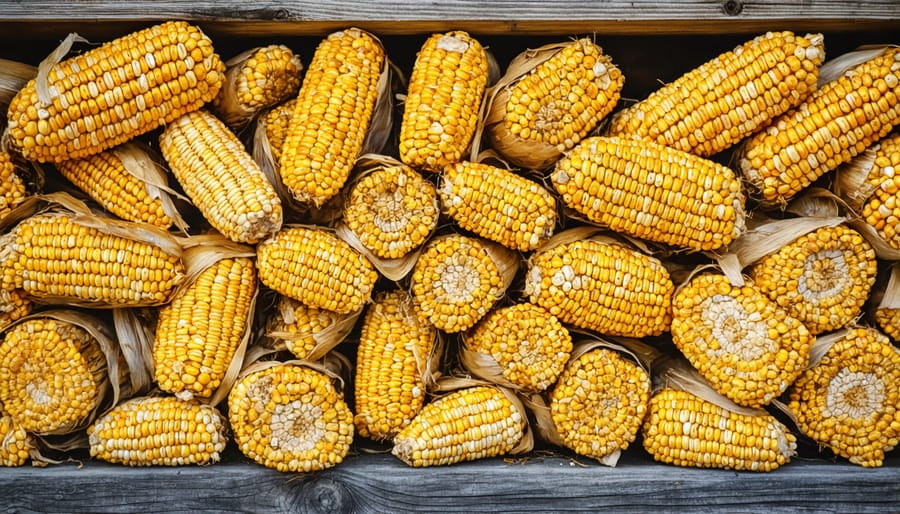
Garden Waste to Energy
Garden waste can be transformed into valuable fuel for your fireplace, offering an eco-friendly solution while helping you manage your yard maintenance. The key is properly processing and drying your garden waste before using it as fuel.
Start by collecting woody materials like tree trimmings, pruned branches, and fallen twigs. These materials have the highest energy content and burn most efficiently. Avoid using grass clippings or fresh leaves, as they contain too much moisture and create excessive smoke when burned.
One effective method is to create compressed garden waste logs. Begin by shredding your collected woody materials into smaller pieces. Mix these with dried leaves and small twigs, then use a log maker or manual press to compress the mixture into compact fuel logs. These need to dry for several months in a well-ventilated area before use.
For smaller pieces of garden waste, consider creating bundled kindling. Gather thin branches and twigs, tie them together in small bundles, and store them in a dry place. These bundles make excellent fire starters and can supplement your main fuel source.
Remember to always ensure your garden waste fuel is completely dry before burning. Wet or green materials create excessive smoke and contribute to creosote buildup in your chimney. By properly processing your garden waste, you can create an effective, sustainable fuel source while reducing waste and saving money.
Processing and Storage Solutions
Drying and Seasoning Methods
Proper drying and seasoning of organic fuels is crucial for achieving optimal fuel efficiency comparison results and a cleaner burn. The key to successful seasoning lies in both timing and technique. For traditional firewood, aim to split logs immediately after cutting and stack them in a well-ventilated area for 6-12 months. Create a slight lean in your stack and ensure it’s elevated off the ground using pallets or wooden beams to prevent moisture absorption.
For organic materials like corn stalks or switchgrass, bundle them loosely and hang them in a covered, airy space. The ideal moisture content should be below 20% before burning. You can test this using a moisture meter or by checking if two pieces make a sharp, clear sound when knocked together.
Pine cones and other small organic materials should be spread out on mesh racks in a single layer, allowing air to circulate freely. Store these in a sheltered outdoor area or a well-ventilated garage. During the drying process, rotate materials periodically to ensure even drying and prevent mold growth.
Remember that properly dried fuel not only burns more efficiently but also produces less smoke and creosote buildup in your chimney. Consider creating a dedicated drying area with good airflow and protection from rain to maintain a year-round supply of well-seasoned fuel.
Smart Storage Systems
Proper storage of organic fuel sources is crucial for maintaining their quality and ensuring they’re ready when you need them. A well-designed storage system not only protects your fuel but also makes it easily accessible during those chilly evenings.
For wood-based fuels, consider installing a covered rack system that keeps materials elevated off the ground and protected from moisture. The ideal setup includes a slatted base for airflow and a slanted roof to shed rain and snow. Position your storage area against a south-facing wall to take advantage of natural warmth and drying effects.
When storing pellets or compressed biomass, use sealed containers that protect against humidity. Large plastic bins with secure lids work well, but remember to place them in a dry, temperature-controlled environment. For those with space constraints, vertical storage solutions like stackable containers can maximize your available area while keeping different fuel types organized.
Smart organization is key – implement a first-in-first-out system by dating your fuel supplies and rotating stock accordingly. Consider creating zones in your storage area: one for completely seasoned fuel ready for immediate use, another for fuel that’s still drying, and a third for fresh additions to your supply.
Don’t forget ventilation – proper airflow prevents mold growth and helps maintain optimal moisture content in your organic fuels. Installing a simple fan system or strategic ventilation gaps can make a significant difference in fuel quality over time.
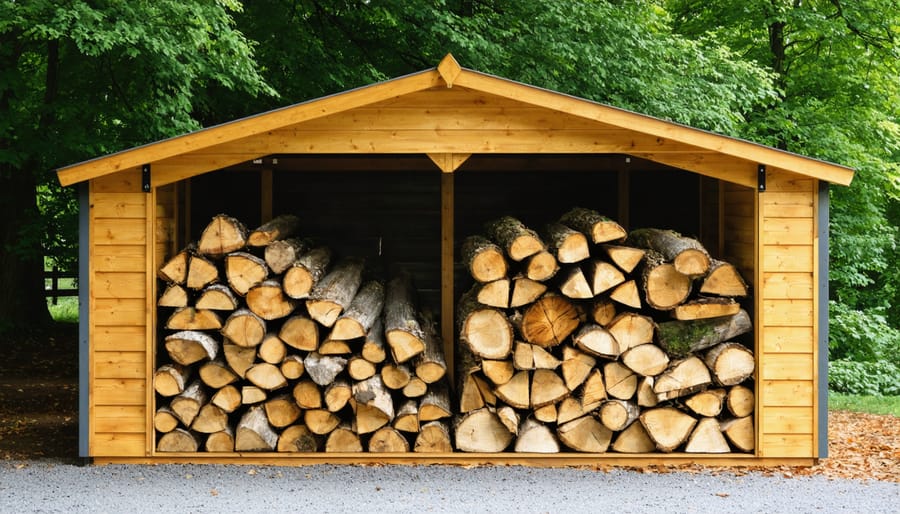
Environmental Impact and Benefits
Growing your own fireplace fuel offers remarkable environmental benefits that extend far beyond your home. While traditional heating fuel options often involve commercial logging and long-distance transportation, cultivating your own fuel sources significantly reduces your carbon footprint. When you grow trees or maintain a woodlot on your property, these plants actively sequester carbon dioxide throughout their growth cycle, helping to offset the emissions released during burning.
Sustainable fuel cultivation also promotes biodiversity in your local ecosystem. By maintaining a variety of tree species and allowing natural undergrowth, you create habitats for wildlife and support beneficial insects. This approach stands in stark contrast to commercial logging operations, which often result in monoculture plantations and disrupted ecosystems.
Water conservation is another notable advantage. Trees and shrubs grown for fuel can help prevent soil erosion, improve water retention in the ground, and naturally filter rainwater. This is particularly beneficial if you’re growing your fuel sources on slopes or in areas prone to water runoff.
The practice also eliminates the need for fuel transportation, reducing fossil fuel consumption and associated emissions. When you source fuel from your own property, there’s no need for trucks to transport wood across long distances, cutting down on transportation-related pollution.
Additionally, growing your own fuel allows you to ensure sustainable harvesting practices. By selecting specific trees for harvest and maintaining a healthy rotation cycle, you can preserve the long-term health of your wood lot while maintaining a steady fuel supply for your fireplace.
Embracing organic fuel sources for your fireplace is more than just an eco-friendly choice – it’s a sustainable lifestyle decision that benefits both your home and the environment. From cultivating fast-growing trees to harvesting agricultural byproducts, you now have the knowledge to create your own renewable fuel supply. By implementing these sustainable practices, you’ll reduce your carbon footprint while maintaining the cozy ambiance you love. Start small by experimenting with one or two methods that best suit your property and lifestyle. Remember, every sustainable choice makes a difference, and your journey toward self-sufficient, organic fuel production can inspire others in your community. Take that first step today by planning your fuel garden or connecting with local farmers for agricultural waste – your fireplace and the planet will thank you.

